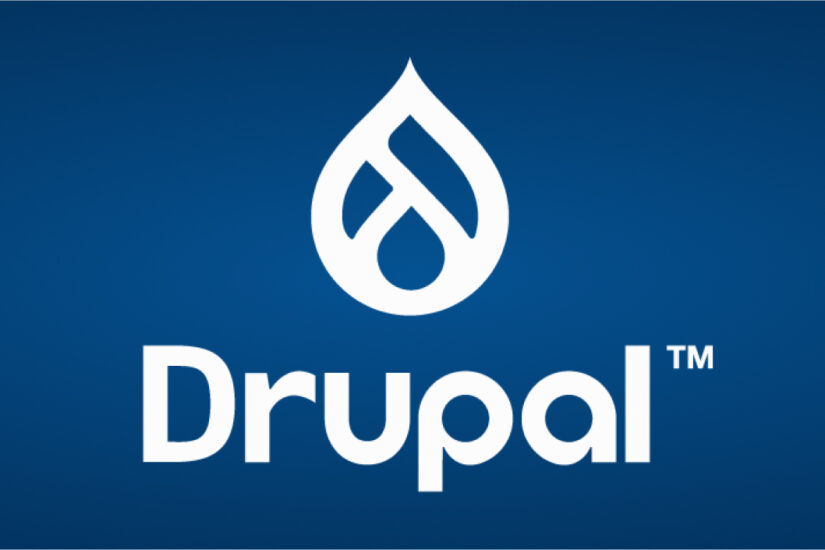Interested in using WordPress to build your nonprofit website? You’d be in good company—60% of nonprofits globally use WordPress as their website’s content management system (CMS). Plus, some of the best nonprofit websites are built using WordPress.
WordPress can help your nonprofit create the engaging website it needs to connect with community members and supporters, raise mission awareness, and drive funding.
This guide will help determine whether WordPress is the right choice for your nonprofit and how to implement an effective WordPress strategy. Here’s what we’ll cover:
- Is WordPress for Nonprofits the Right Choice for Your Organization?
- Planning Your Nonprofit WordPress Website
- WordPress Themes for Nonprofits
- WordPress Plugins for Nonprofits
- Examples of Nonprofits Using WordPress
- How to Fundraise Effectively Using WordPress for Nonprofits
- Content Tips for Your Nonprofit WordPress Website
- Tips to Maintain a Healthy WordPress Website
- WordPress for Nonprofits Resources
Let’s begin by exploring some of the advantages of WordPress and other CMS platforms.
Is WordPress for Nonprofits the Right Choice for Your Organization?
When choosing a content management system for your nonprofit, you might be deciding between several top platforms, such as Drupal and WordPress. How can you determine which option is best for your nonprofit? It’s essential to select a CMS that will support your long-term goals, so consider the following WordPress pros and cons before deciding.
| Reasons to Use WordPress | Reasons to Use Drupal |
| User-friendly interface | Equipped to handle complex content needs |
| Simple editorial process and media management | Allows for more customization |
| More cost-effective to maintain | Offers a variety of user roles |
| Cheaper/easier to find talent to help with maintenance | |
| Readily-available educational resources |
Reasons to Use WordPress for Your Nonprofit Website
Many marketers and web professionals find themselves drawn to creating a new website using WordPress or switching to WordPress because of the following benefits it offers:
- User-friendly interface. WordPress is renowned for its user-friendly backend that makes it easy for beginners to upload content.
- Simple editorial process and media management. WordPress leverages the Gutenberg block editor, a user-friendly, flexible drag-and-drop site builder. Plus, the Media Library makes storing videos, images, and other content assets simple.
- More cost-effective to maintain. WordPress is free to use, and many hosting providers offer free or affordable options for smaller nonprofits with limited budgets.
- Cheaper and easier to find talent to maintain your website. It’s also easier to find developers to support your WordPress strategy ataffordable rates.
- Easy to find educational resources. If you take a more DIY approach, it’s very easy to find development resources online because of the vast size of the WordPress community.
WordPress has broken away from past misconceptions that it’s merely a blogging platform and not meant to be used for large organizations with complex needs. Quite the contrary, WordPress is used by a wide variety of organizations, from nonprofits and universities to large corporations and government agencies.
Reasons to Use a Different CMS for Your Nonprofit Website
Despite the many benefits WordPress can offer your nonprofit, there are still a few reasons why you might lean toward another platform, like Drupal.
Nonprofits might use Drupal instead of WordPress if they:
- Have complex content needs. Drupal’s Taxonomy module makes it easy to classify and organize web content, simplifying functionality for organizations with more complex data needs.
- Need more customizability. Drupal’s content types and customizability are often considered the most flexible options on the market.
- Want to create a variety of user roles. Drupal allows users to develop a wide variety of roles with different access levels and permissions, whereas WordPress only offers six pre-defined roles.
Of course, there are other CMS options besides WordPress and Drupal, including HubSpot, Squarespace, and Wix. However, WordPress and Drupal are the most popular options for nonprofits and are generally considered the most useful for building a strong online presence.
Planning Your Nonprofit WordPress Website
After reviewing the advantages of WordPress vs. other CMS options, you might determine that WordPress truly is the right choice for your nonprofit. Next, your nonprofit should follow these steps to set up a powerful website that supports your mission:
Set goals
Any successful project starts with setting clear goals for your team. What do you hope to get out of your brand-new WordPress website? How will it support your ultimate goal to work toward your mission and create positive change in your community? Identify objectives and relevant key performance indicators (KPIs) such as:
| Goals | KPIs to Track |
| Increase website traffic | Total number of visitors, bounce rate, click-through rates from sources like organic search and email |
| Spread mission awareness | New donor acquisition rate, unique users, geographic location of users, donor demographics, volunteer acquisition rate |
| Increase online donations | Online donation page conversion rate, online donor retention rate, average gift size |
- Website traffic goals: How many website visitors do we hope to have in our first six months? Or in our first year?
- KPIs to track: total number of visitors, bounce rate, click-through rate from sources like organic search and email
- Mission-related goals: How many new donors, volunteers, or ambassadors can we recruit through our website? How can we use our website to spread awareness of our mission to new geographic areas or new demographics?
- KPIs to track: new donor acquisition rate, unique users, geographic location of users, donor demographics, volunteer acquisition rate
- Online fundraising goals: How many online donations do we hope to facilitate through our website in the first year?
- KPIs to track: online donation page conversion rate, online donor retention rate, average gift size
Research your audience
Conduct audience research to learn more about the individuals you’re aiming to reach online. Start by building user personas. User personas are fictionalized representations of different audience segments. They include information like:
- Demographic information about each group, such as their age, location, occupation, and level of tech-savviness
- The user’s problem or what they need from your website
- The user’s end goal or purpose for using your website
- Possible barriers they may face and common concerns they have
Here’s a template you can use to design user personas for your website:

Develop three to five personas for your primary audiences. Then, consider how you can design your website to appeal to the needs and motivations of each group. How will you use navigation, calls to action (CTAs), and messaging to meet each user’s needs? We’ll dive more deeply into optimizing the user experience and navigation in later sections.
Choose a domain name
Your domain name is the URL users will type in or click on to access your website. For example, if your nonprofit is called Ocean Guardians Alliance, your domain name could be oceanguardiansalliance.org.
Most nonprofits typically use the extension .org (short for organization), whereas .com is typically used by businesses and corporations.
When choosing a domain, consider pricing—a domain name is usually $10-$20 per year. You’ll also need to renew ownership of the domain name periodically. Domain names typically have a renewal period of a minimum of one year and a maximum of 10 years. Browse domain name registrars to find the right option for your organization.
Choose a host
A website host allows you to purchase space to house your website on the internet. Your host provides a server to hold your website’s files and make them accessible to everyone. Popular, trusted hosting platforms for nonprofits include:
- Pantheon: Offers fast performance speeds, streamlined workflows, and advanced security.
- WP Engine: WordPress-specific website host with proprietary WordPress caching, automated updates for plugins, themes, WordPress core, and PHP, and 24/7 support services.
- Kinsta: Offers real-time chat support, high performance, and reduced load times with Edge Caching.
When choosing a website host, consider pricing, your website needs, and customer support services. Evaluate each platform’s features, such as bandwidth, security features, domain registration, disk space, and e-commerce functionality. Some hosts offer discounts for nonprofits, so look into available perks as you make your decision.
Select a theme
A WordPress theme is a set of pre-made templates and code files that work together to build a website’s front-end styling. When building your WordPress website, you can either select a pre-made theme or work with a WordPress developer to create a custom theme. We’ll explore the pros and cons of both options in a later section.
Design the user experience
The user experience (UX) is the way visitors interact with your website. It involves the links they click, pages they read, forms they fill out, and other ways they engage with your content.
Positive nonprofit user experience fosters stronger relationships with your online audience and greater engagement with your mission. Design a powerful UX by:
- Implementing helpful CTAs. CTAs help visitors navigate your website by quickly finding pages and resources that they’re looking for. Create CTA buttons and links for your most important pages, like your online donation form or volunteer registration page. Make your CTAs prominent and eye-catching, with bright colors and bold fonts, to drive more engagement with your target actions.
- Developing user journeys for each of your web audiences. The user journey involves specific steps audience members take based on their needs and motivations. Design user pathways for your primary audiences, such as donors, volunteers, corporate sponsors, and those looking for support from your nonprofit. Use specific CTAs that call out different audiences by name to make it easier for visitors to navigate. For example, check out how the Boys & Girls Clubs of America website leverages an “I am” CTA to let visitors choose the category that best fits their needs:

- Prioritizing accessibility. Accessibility means all visitors can understand and use your website regardless of any temporary or permanent disabilities they may have. Better accessibility means a positive user experience for all visitors. Follow the Web Content Accessibility Guidelines (WCAG), which include specific steps to take to improve your site’s accessibility. A few recommendations to implement are using strong color contrast, including alternative text for images, and ensuring your website is keyboard-navigable.
Test your UX before pushing your WordPress website live by running manual and automated accessibility tests and asking for feedback from focus groups.
Create wireframes
Wireframes are blueprints for key landing page layouts. Wireframes help visualize a website’s structure and ensure the user experience is optimized before inputting content.
Your wireframes should include space for images, page headlines, CTAs, and your main menu. Create wireframes for high-impact pages like your homepage, online donation page, blog, and event calendar.
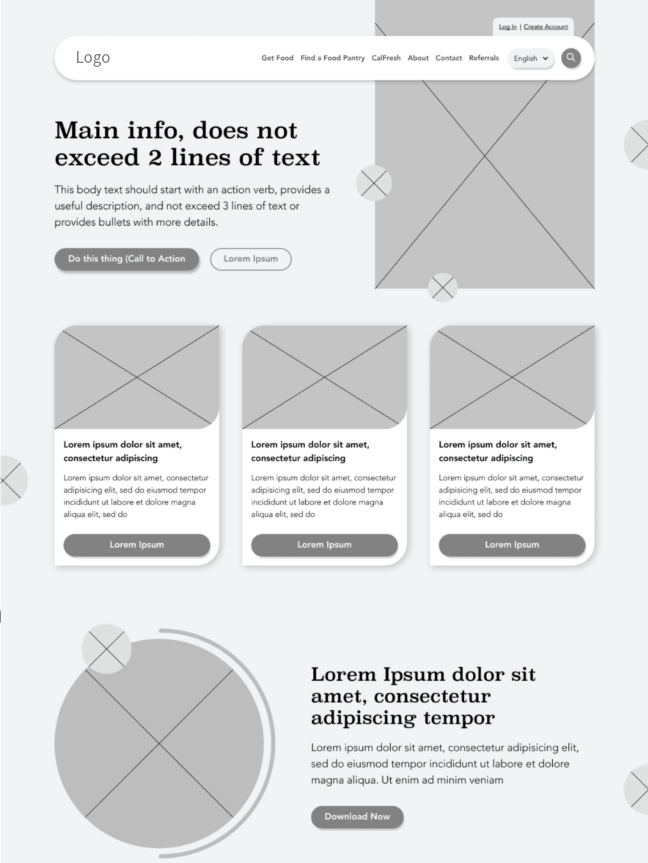
Develop navigation
Navigation is the way visitors move through your website to find the pages and information they need. Effective navigation creates a smooth user experience and improves your audience’s impression of your website and your nonprofit in general.
Consider the following navigation elements and how you’ll incorporate them into your website:
- Main menu: It’s typically recommended to include a limited number of main menu items to simplify your navigation and make it easy to understand. Carefully choose five to seven categories that make the most sense for your main menu items. Most nonprofits have menu items such as an About or Programs page, Impact Stories or Testimonials, Ways to Get Involved/Donate, News/Press, and Upcoming Events.
- CTA strategy. CTAs are an essential part of navigation. How will you use CTA buttons, links, and text to drive traffic to pages that are essential to your mission, like your donation form?
- Internal search functionality. If your website houses a variety of online resources, an internal search engine can make it easy for visitors to find the information they need. For example, a healthcare-focused nonprofit might include an internal database for doctors in the local community or common health ailments.
The keys to effective navigation are simplicity and relevance. Your navigation should be easy to understand and each page should be relevant to a segment of your audience.
WordPress Themes for Nonprofits
As mentioned, your nonprofit can use either a pre-built or custom theme to build your WordPress website’s front-end styling. Learn more about the pros and cons of both options:
Prebuilt themes for nonprofits
Prebuilt themes are not an ideal solution for most nonprofits due to potential limitations and lack of flexibility. They need to be monitored for performance and accessibility. However, they are easy to get up and running and very budget-friendly for smaller nonprofits.
Here are a few theme options that many nonprofits use to build their websites:
SeedProd
Drag-and-drop WordPress website builder with WooCommerce integration, spam protection, SEO support, and mobile-friendly pages.
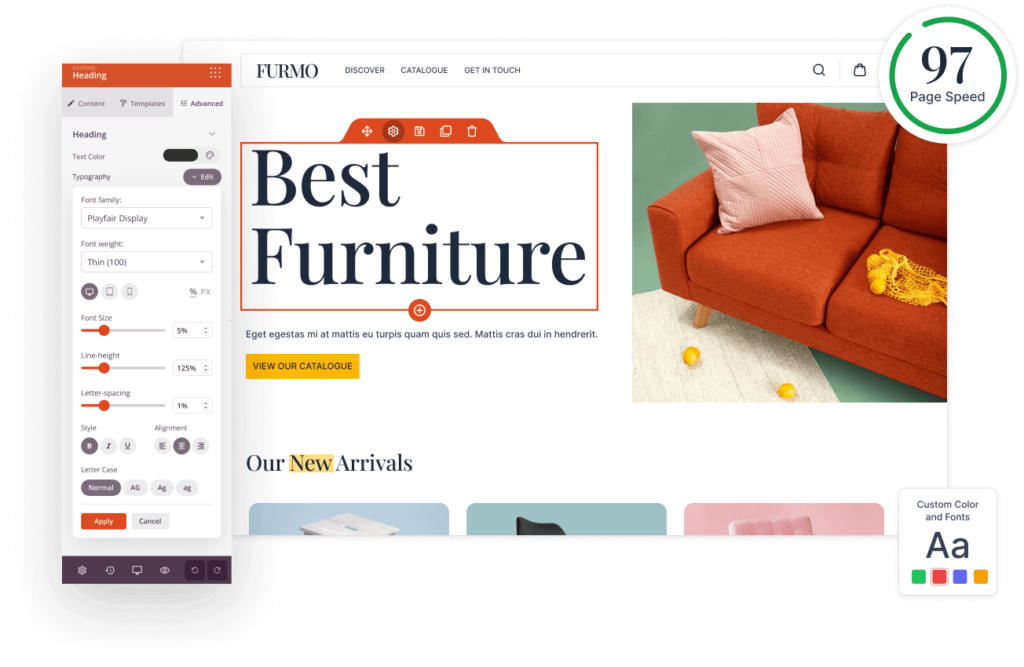
Oxygen
Developer-friendly drag-and-drop theme with global colors, sticky and overlay headings, responsive control, scroll animations, and more.
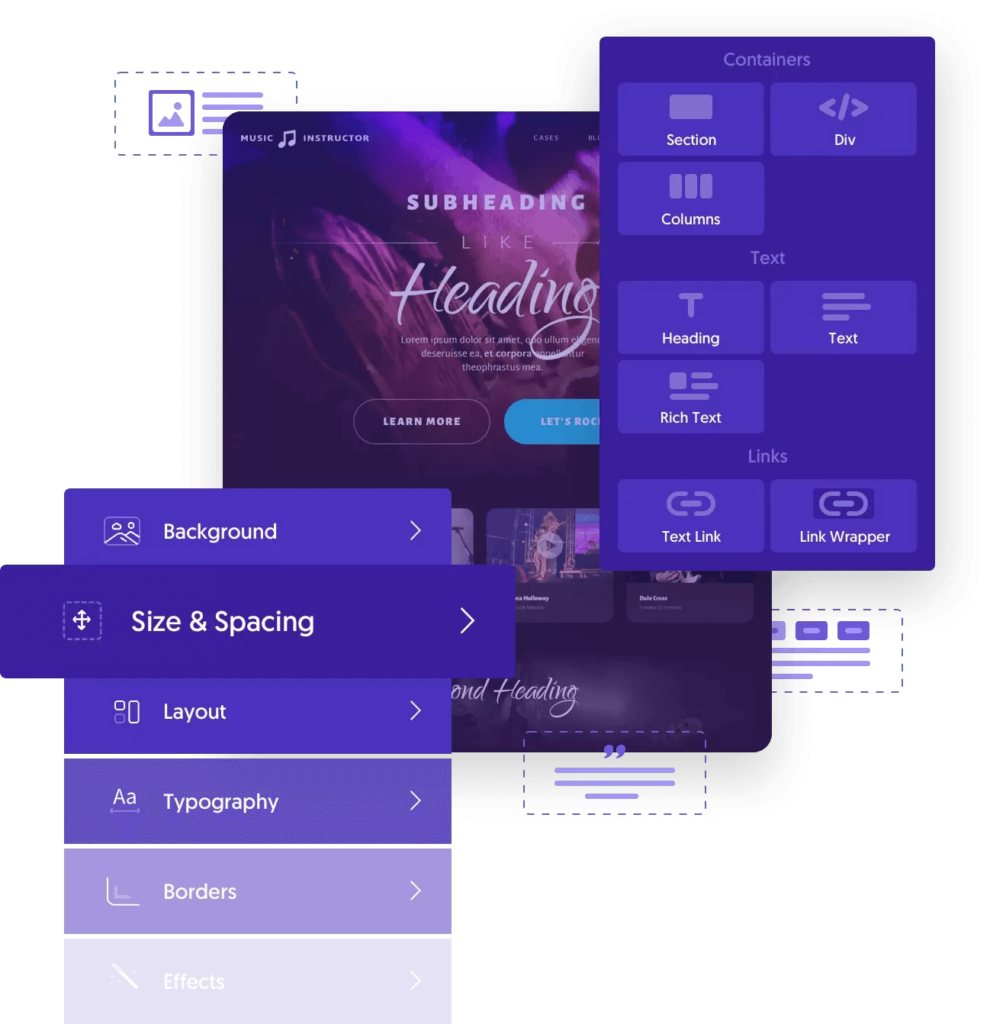
Benevolent
A flexible theme designed with nonprofits in mind, featuring SEO tools, CTA buttons, and custom widgets.
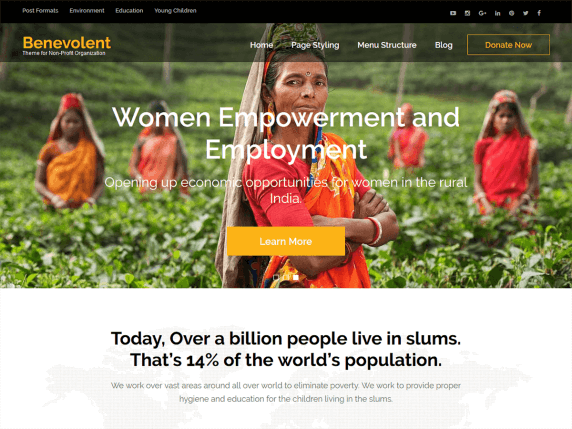
Grassroots
A theme for purpose-driven organizations, with fundraising functionality, mobile-responsive pages, and logo, color, and font customization opportunities.
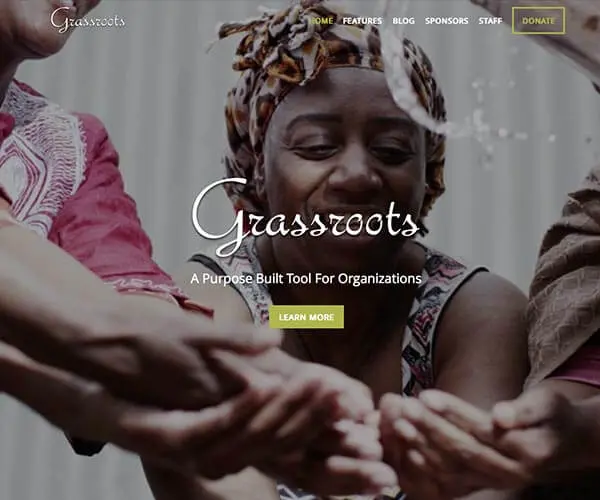
Most of these themes include some functionality for fundraising, CTAs, and other features nonprofits need to push their missions forward. However, pre-built themes offer limited customization capabilities and may not have all the features your nonprofit requires for your specific needs. Plus, they may not be as accessible, leading to potential usability issues for your online audience.
Custom themes for nonprofits
Most organizations will see the greatest success from their websites when they leverage a custom theme. Custom themes ensure that your website has all the functionality it needs and give your website a unique look and feel that can help distinguish your organization from similar nonprofits.
Work with a nonprofit website developer who specializes in WordPress. Kanopi’s experienced developers have helped develop custom-branded websites for nonprofits of all sizes and types. Kanopi’s professionals will research your unique audience and website needs to craft a theme and strategy that works best for your mission.
WordPress Plugins for Nonprofits
Plugins are tools that extend the functionality of your WordPress website by providing additional features. They are pre-built code packages that you can immediately incorporate into your site without additional coding needed.
When it comes to plugins, prioritize quality over quantity. Enabling too many could lead to security and performance issues if you’re using plugins that aren’t well-written.
Here are a few considerations to keep in mind when browsing plugin options:
Contributed vs. premium plugins
Contributed plugins are available for free through the WordPress Plugin Directory. They are typically created by members of the WordPress community on a volunteer basis. They are usually open-source, meaning that anyone can alter the source code for their unique plugin needs.
Premium plugins require a fee and are usually developed by professional software developers. Often, premium plugins have additional advanced features to assist with your goals. They tend to be more dependable when it comes to security and support.
Types of WordPress plugins
There are a few common categories of plugin functionality that nonprofits can consider, including:
- Search engine optimization (SEO) plugins: Support SEO strategies with tools to add metadata to web pages and content, such as meta descriptions, page titles, and optimized URLs.
- Security plugins: Help keep your website safe by monitoring for malware, blocking attacks, and sending security alerts. Security plugins are less necessary when you choose a secure hosting provider.
- Performance plugins: Enhance site performance by improving caching, optimizing files, and streamlining your database. Similar to security plugins, performance plugins aren’t required when you choose a website host that prioritizes fast load speeds.
By working with a developer, you can understand the types of plugins that will best fit your website’s needs and which ones aren’t worth the investment.
WordPress plugin examples
Because it’s important to use plugins sparingly, look for tools that are recommended by established software developers. This will ensure you’re choosing plugins that help rather than hurt your site’s performance. For example, Kanopi recommends the following plugins:
- ACF. ACF is a powerful, multi-use plugin for organizations looking to keep their sites as streamlined as possible. Developers can use ACF to create a wide variety of site features, such as customizable CTAs, media galleries, graphs and charts, timelines, and other advanced features.
- Yoast. Yoast is an SEO plugin that helps organizations create SEO-optimized content to drive more traffic from search engines. Yoast offers suggestions to improve SEO performance, helps create a solid internal linking structure, manages redirects, and more.
- Wordfence or Solid Security Basic. These are two of our recommended security plugins. They both help keep your website safe by stopping brute force attacks, offering secure login protocols, and scanning to detect vulnerabilities in themes and plugins.
- PhastPress. PhastPress is a performance plugin that can manage all performance needs in one tool. It optimizes images, employs native lazy loading, and loads scripts asynchronously.
Our experienced developers have tested and used these plugins successfully on many websites, confirming that they will help optimize your site’s performance without compromising speed or security.
Examples of Nonprofits Using WordPress
Millions of nonprofit websites run on WordPress. Here’s a look at five examples, along with insights from Kanopi’s support services for each site:
Physicians for Human Rights
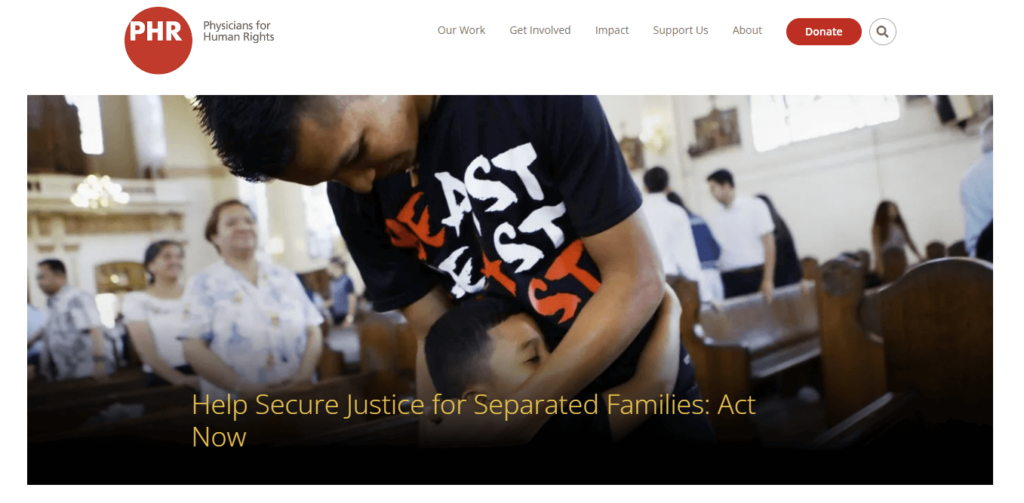
Physicians for Human Rights is a nonprofit that investigates and documents human rights violations while promoting medical ethics. Their website features a clean, professional layout, dynamic reports, and multilingual functionality.
Alameda County Community Food Bank (ACCFB)
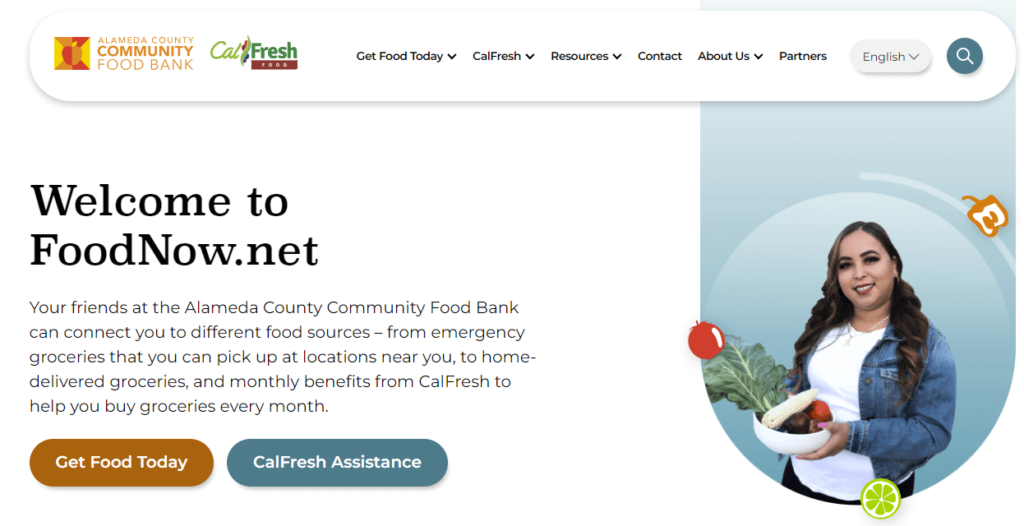
The ACCFB helps connect those in need with different food sources. Their website offers a fresh, mobile-friendly interface, user-friendly pantry location map, and action-focused CTAs.
PEN America
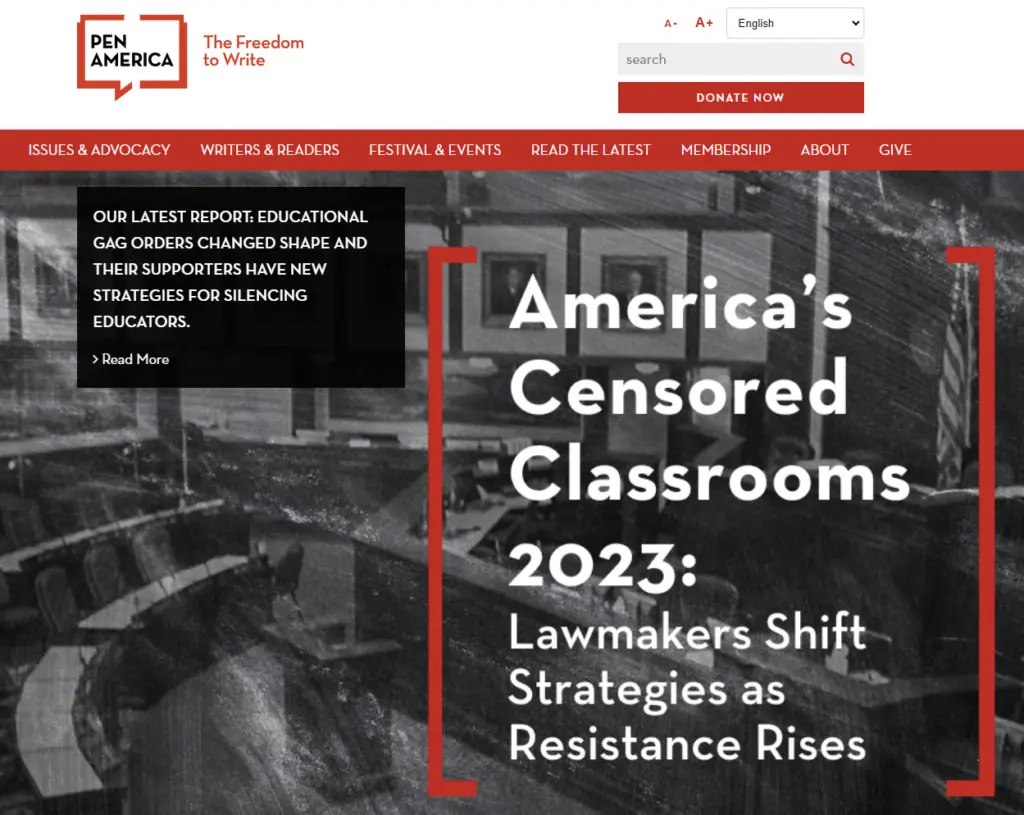
PEN America is a nonprofit devoted to the advancement of freedom of expression in the United States and worldwide. The organization’s website features a modern, distinctive design, a robust news and updates section, and easy-to-navigate research and reports.
Catalyst

Catalyst prioritizes accelerating progress for women in the workplace. Their WordPress website includes interactive reports that can be translated into other languages, micro-learning, free online courses, and a robust research library.
First Tee

First Tee is a nonprofit that empowers kids with life skills and self-confidence through the game of golf. The First Tee website offers seamless access to member websites, a simple donation page, and compelling stories of how the nonprofit has supported children.
How to Fundraise Effectively Using WordPress for Nonprofits
In the digital age, making giving simple and convenient for supporters is vital to securing more donations. Using WordPress, you can grow your website into an efficient, secure online fundraising tool.
Promote online giving by taking these steps:
- Add a streamlined donation page. Provide a simple, easy-to-use donation form for supporters to use. Ensure the form only asks for necessary information, like donors’ names, donation amounts, and payment information. Embed the donation form directly into your website so supporters don’t have to visit a third-party platform to give. And make sure your form is accessible and inclusive.
- Offer a secure payment processor. A payment processor is a tool that manages donors’ financial information when they submit a gift. Your payment processor should include a variety of security features, such as PCI compliance, data encryption, and fraud protection. A secure payment processor keeps donor data safe, giving donors greater confidence in the giving process.
- Consider plugin-based giving options. You can also use a donation plugin to manage your online fundraising. For example, the GiveWP plugin offers features such as customizable donation forms, donor management, and fundraising reports. This helps you keep track of giving trends and donor information to improve your stewardship efforts.
Make sure your payment processor can accept a variety of payment methods, such as credit/debit cards, ACH direct deposits, PayPal, Google Pay/Apple Pay, and other methods that appeal to your audience. This can make the giving process more convenient because donors can use their preferred payment method or the payment method they have on hand.
Content Tips for Your Nonprofit WordPress Website
After planning out your WordPress website and strategizing your online fundraising process, it’s time to fill your website with content. Your content is what brings your nonprofit’s mission to life online. It should align with your nonprofit’s values and mission while reflecting your branding.
Keep these tips in mind as you develop your website’s content strategy:
- Write for the web. Writing for the web is slightly different than your nonprofit’s other communication platforms, like direct mail. Your web content should use simple, plain language and avoid jargon. Incorporate second-person words like “you” more than first-person pronouns like “we” or “our.” This keeps the focus on your supporters and constituents rather than on your nonprofit.
- Develop an SEO strategy. SEO optimization helps improve your website’s rankings in search engine results. Follow SEO best practices like optimizing your pages and blog posts for specific keywords and using a clear internal linking approach to connect relevant pages.
- Incorporate multimedia elements. Elements like video, images, and audio can help break up text blocks and provide visitors with multiple ways to engage with your site. Use photos that show people’s faces to create an emotional connection. Include video testimonials from staff members, volunteers, and community members to emphasize your nonprofit’s credibility.
- Create a blogging plan. Your nonprofit’s blog is a great resource to share information about ongoing projects, programs, and campaigns. Consistency is key to maintaining blog traffic. Develop a blog posting schedule and assign team members to different roles, such as writing and photography. Coordinate with your social media manager to promote blog posts promptly.
- Make your content accessible. Include alternative text for images, captions for videos, strong color contrast and bold lettering in your infographics, and other accessibility considerations that make your content easy to interpret and interact with.
Cultivate a tone of voice throughout your content that aligns with your nonprofit’s values and mission. For example, a nonprofit that supports children’s healthcare might use a lighthearted, playful tone, while an organization devoted to researching climate change solutions might have a studious, serious tone.
Tips to Maintain a Healthy WordPress Website
New data management and website security best practices and measures are created all the time. To keep your website healthy and secure, you must devote yourself to ongoing WordPress maintenance.
Here are a few continuous maintenance tasks to keep in mind:

- Core updates: WordPress core is the foundation of the WordPress CMS. The WordPress performance team is constantly working on new versions of WordPress core that contain performance improvements, new security updates, and new features for WordPress users to take advantage of. Keep an eye on the WordPress core blog for updates and to know when it’s time for a core update.
- Theme and plugin updates: Pre-built themes and plugins also receive updates from time to time for similar reasons—to improve features and offer greater security. Refresh your theme and plugins at regular intervals, such as quarterly, to stay up to date with new releases.
- Caching: Caching is when a browser or server saves a version of your website to deliver faster loading times the next time a user visits the site. You can use different caching methods for your WordPress website, whether page caching, browser caching, server caching, etc. Determine which method will work best for your website and check in on the process over time, as your needs may change.
- Data optimization: Your website’s data files will become more complex over time as you add new information and connections between data. Be sure to regularly optimize and simplify your database to reduce clutter. It’s easiest to work with a web development professional to thoroughly clean your website and ensure it’s optimized for peak performance.
- Accessibility: Accessibility best practices continually evolve as new assistive technologies are released. Make sure to stay up to date on the latest accessibility guidelines and assistive technologies to make your website compatible.
The most effective way to keep your website healthy over time is to form a relationship with a professional web development team that can get to know your website and your nonprofit’s unique digital needs. Professionals like the Kanopi team stay up to date on the latest WordPress releases and best practices. We can work with you to understand your audience and enhance your website for optimal performance.
WordPress for Nonprofits Resources
Looking for more support as you dive into the world of WordPress? Here are some helpful resources to consider:
- Read Kanopi’s blog for the latest updates on WordPress, content strategy, and other web design and development news
- Watch WP 101’s tutorial videos to deepen your WordPress knowledge and troubleshoot common issues
- Contact Kanopi’s WordPress team if you’re looking for a dedicated partner to support your WordPress development








